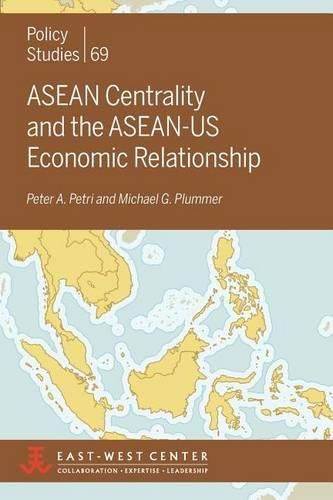Readings Newsletter
Become a Readings Member to make your shopping experience even easier.
Sign in or sign up for free!
You’re not far away from qualifying for FREE standard shipping within Australia
You’ve qualified for FREE standard shipping within Australia
The cart is loading…






The Association of Southeast Asian Nations (ASEAN) is strategically significant because of its size, dynamism, and role in the Asian economic and security architectures. This paper examines how ASEAN seeks to strengthen these assets through centrality in intraregional and external policy decisions. It recommends a two-speed approach toward centrality in order to maximize regional incomes and benefit all member economies: first, selective engagement by ASEAN members in productive external partnerships and, second, vigorous policies to share gains across the region. This strategy has solid underpinnings in the Kemp-Wan theorem on trade agreements. It would warrant, for example, a Trans-Pacific Partnership (TPP) agreement with incomplete ASEAN membership, complemented with policies to extend gains across the region. The United States could support this framework by pursuing deep relations with some ASEAN members, while broadly assisting the region’s development.
$9.00 standard shipping within Australia
FREE standard shipping within Australia for orders over $100.00
Express & International shipping calculated at checkout
The Association of Southeast Asian Nations (ASEAN) is strategically significant because of its size, dynamism, and role in the Asian economic and security architectures. This paper examines how ASEAN seeks to strengthen these assets through centrality in intraregional and external policy decisions. It recommends a two-speed approach toward centrality in order to maximize regional incomes and benefit all member economies: first, selective engagement by ASEAN members in productive external partnerships and, second, vigorous policies to share gains across the region. This strategy has solid underpinnings in the Kemp-Wan theorem on trade agreements. It would warrant, for example, a Trans-Pacific Partnership (TPP) agreement with incomplete ASEAN membership, complemented with policies to extend gains across the region. The United States could support this framework by pursuing deep relations with some ASEAN members, while broadly assisting the region’s development.